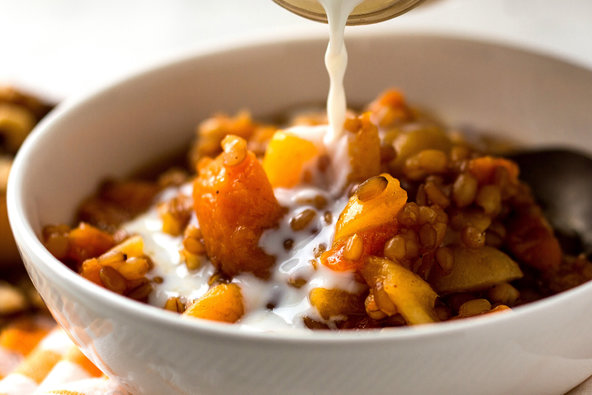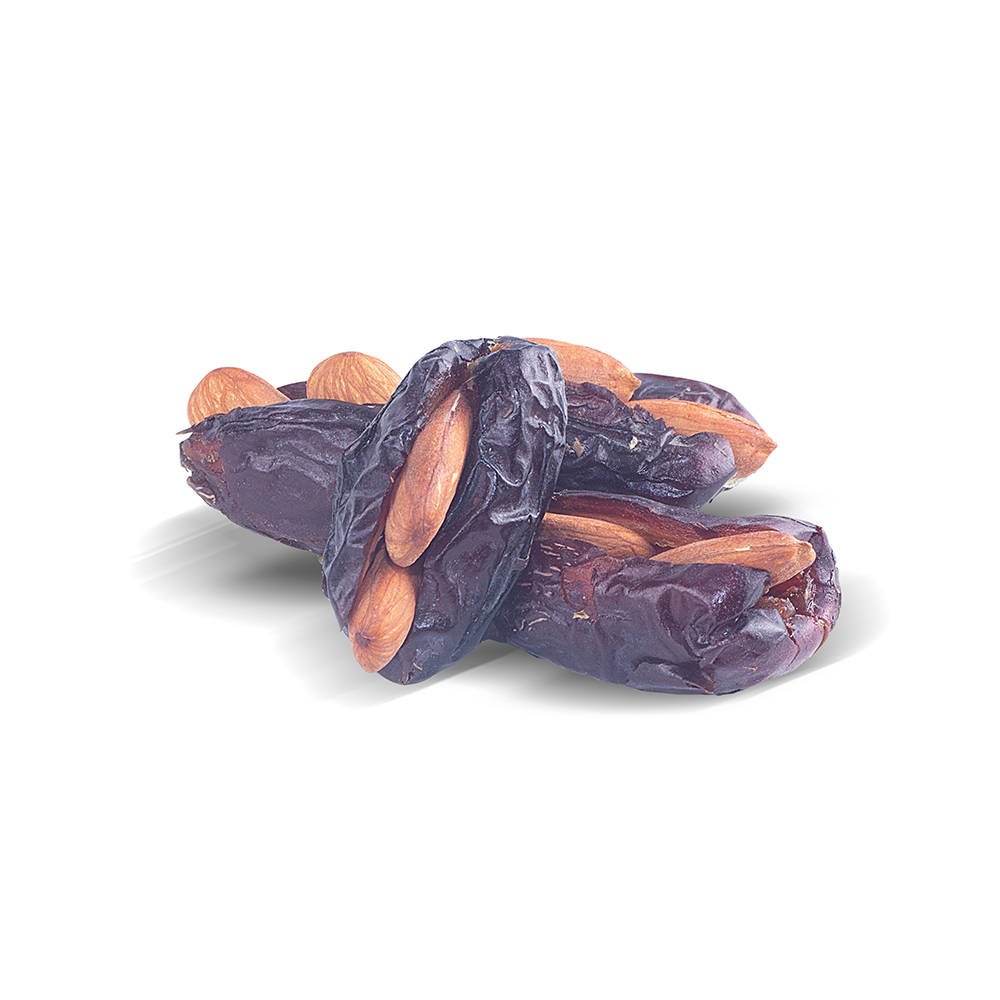Health
Kale: The Nutritional Powerhouse and Culinary Star

Introduction
Kale, often hailed as a superfood, has become a staple in healthy diets around the world. This leafy green, known for its vibrant color and robust flavor, is celebrated for its impressive nutritional profile and versatility in the kitchen. Whether you’re tossing it into salads, blending it into smoothies, or using it as a side dish, kale offers numerous health benefits and culinary possibilities.
Nutritional Benefits of Kale
Kale’s status as a superfood is well-deserved, thanks to its rich array of nutrients. Here’s a closer look at what makes kale so beneficial:
- Rich in Vitamins and Minerals: Kale is packed with essential vitamins and minerals. A single serving (about 100 grams) provides a significant amount of vitamin K, which is vital for blood clotting and bone health. It also contains high levels of vitamins A and C, both of which support immune function and skin health.
- High in Antioxidants: Kale is a rich source of antioxidants, including quercetin and kaempferol. These compounds help combat oxidative stress and inflammation in the body, potentially reducing the risk of chronic diseases such as heart disease and cancer.
- Excellent Source of Fiber: With its high fiber content, kale supports digestive health and helps maintain a healthy weight. Fiber promotes regular bowel movements and can aid in controlling blood sugar levels.
- Low in Calories: Kale is low in calories, making it an excellent choice for those looking to manage their weight while still getting a nutrient-dense food.
Culinary Uses of Kale
Kale’s versatility in the kitchen makes it a popular choice for various recipes. Here are some ways to enjoy kale:
- Salads: Kale can be the star of a hearty salad. Its sturdy leaves hold up well against robust dressings and toppings. Massaging the kale with a bit of olive oil and salt can help soften the leaves and enhance the flavor.
- Smoothies: Adding kale to smoothies is an easy way to boost your intake of greens. Combine kale with fruits like bananas, berries, and apples for a nutrient-packed drink that’s both delicious and refreshing.
- Sautéed or Stir-Fried: Kale can be sautéed or stir-fried with garlic, onions, and a splash of soy sauce for a quick and nutritious side dish. This method brings out the vegetable’s natural flavors and adds a pleasant texture.
- Kale Chips: Making kale chips is a popular way to enjoy this green in a crunchy, snackable form. Simply toss kale leaves with olive oil and your favorite seasonings, then bake until crisp.
- Soups and Stews: Kale adds a nutritious boost to soups and stews. It holds its texture well when cooked and complements a variety of ingredients, from beans and lentils to vegetables and meats.
Health Considerations
While kale is a nutritious food, there are a few considerations to keep in mind:
- Thyroid Health: Kale contains goitrogens, substances that can interfere with thyroid function when consumed in large amounts. For most people, eating kale in moderate quantities is not a concern, but individuals with thyroid conditions should consult their healthcare provider.
- Oxalates: Kale contains oxalates, which can contribute to kidney stone formation in susceptible individuals. Those with a history of kidney stones may need to monitor their intake.
- Pesticides: Kale is often listed among the produce items with higher pesticide residues. To minimize exposure, consider buying organic kale or washing it thoroughly before consumption.
How to Store and Prepare Kale
Kale is best stored in the refrigerator, where it can stay fresh for about a week. To maintain its crispness, keep it in a perforated plastic bag or a produce drawer. Before preparing kale, rinse it thoroughly to remove any dirt or grit. Removing the tough stems and chopping the leaves into smaller pieces can make it easier to cook and eat.
Conclusion
Kale is a nutritional powerhouse that offers numerous health benefits and culinary possibilities. Its rich content of vitamins, minerals, and antioxidants makes it a valuable addition to a balanced diet. Whether enjoyed raw in salads, blended into smoothies, or cooked in various dishes, kale is a versatile ingredient that can enhance both the flavor and nutritional value of your meals. By incorporating kale into your diet, you can take advantage of its many health benefits while enjoying a delicious and satisfying food.
Health
Ancient Grains for Breakfast: A Nutritious Start to Your Day

Breakfast is often called the most important meal of the day, and for good reason. A balanced breakfast can set the tone for the rest of your day, providing the energy and nutrients needed to start your morning right. In recent years, ancient grains have become a popular choice for breakfast, thanks to their rich nutritional profile and unique flavors. But what exactly are ancient grains, and why should you consider incorporating them into your morning routine?
What Are Ancient Grains?
Ancient grains are a group of cereals and seeds that have remained relatively unchanged for thousands of years. Unlike modern grains, such as wheat and corn, which have been heavily modified through selective breeding to increase yield and improve resistance to pests, ancient grains retain their original genetic composition. Some of the most well-known ancient grains include quinoa, spelt, farro, millet, amaranth, teff, barley, and kamut.
These grains have been cultivated for centuries by various civilizations and have recently gained popularity due to their health benefits, sustainable growth practices, and versatility in the kitchen.
The Nutritional Benefits of Ancient Grains
One of the key reasons ancient grains are gaining traction as a breakfast option is their exceptional nutritional value. They are packed with essential nutrients, including:
- Fiber: Most ancient grains are high in dietary fiber, which aids in digestion and helps maintain a healthy gut. A fiber-rich diet can also contribute to lower cholesterol levels and better blood sugar control.
- Protein: Many ancient grains, such as quinoa and amaranth, contain more protein than typical grains like rice or corn. Quinoa, in particular, is considered a complete protein, meaning it contains all nine essential amino acids that the body cannot produce on its own.
- Vitamins and Minerals: Ancient grains are excellent sources of vital vitamins and minerals, including iron, magnesium, potassium, and B vitamins, which are crucial for energy production and maintaining overall health.
- Antioxidants: Some ancient grains, such as teff and millet, contain higher levels of antioxidants than modern grains. Antioxidants help protect the body from oxidative stress and reduce inflammation.
Why Choose Ancient Grains for Breakfast?
Choosing ancient grains for breakfast can be a game-changer for your diet and overall health. Here are several reasons to consider incorporating them into your morning routine:
- Balanced Nutrition: Ancient grains provide a balanced combination of complex carbohydrates, protein, and healthy fats. This balance helps maintain energy levels throughout the morning, preventing the mid-morning slump often caused by high-sugar breakfast options.
- Sustained Energy Release: The complex carbohydrates found in ancient grains are digested more slowly than refined grains, providing a sustained release of energy. This slow digestion helps keep you feeling full longer and reduces the urge to snack between meals.
- Gluten-Free Options: For those with gluten sensitivities or celiac disease, several ancient grains, such as quinoa, millet, and amaranth, are naturally gluten-free, offering a safe and nutritious alternative to traditional wheat-based breakfast foods.
- Versatility and Flavor: Ancient grains come in a variety of flavors and textures, making them a versatile addition to your breakfast repertoire. They can be used in a wide range of dishes, from hot porridge to cold grain salads, granola bars, or even smoothies.
Delicious Ways to Enjoy Ancient Grains for Breakfast
There are countless ways to incorporate ancient grains into your breakfast. Here are a few ideas to get you started:
- Ancient Grain Porridge: Start your day with a warm bowl of porridge made from quinoa, farro, or amaranth. Cook the grains in milk or a dairy-free alternative, add a touch of honey or maple syrup for sweetness, and top with fresh fruits, nuts, and seeds for added flavor and nutrition.
- Granola with Ancient Grains: Create a homemade granola mix using a combination of oats, quinoa flakes, millet, and puffed amaranth. Add your favorite nuts, dried fruits, and a sprinkle of cinnamon for a crunchy, nutritious topping for yogurt or smoothie bowls.
- Breakfast Grain Bowls: Combine cooked ancient grains like farro or spelt with sautéed vegetables, a poached egg, and a drizzle of olive oil for a savory breakfast bowl. This protein-packed meal is perfect for those who prefer a hearty, savory start to their day.
- Ancient Grain Pancakes or Waffles: Mix quinoa flour or spelt flour into your pancake or waffle batter for a nutritious twist on a classic breakfast favorite. Top with fresh berries, a dollop of Greek yogurt, and a drizzle of honey for a deliciously healthy morning treat.
The Sustainable Choice
Beyond their nutritional benefits, ancient grains are also a more sustainable option for the environmentally conscious consumer. Many ancient grains are resilient crops that require fewer resources, such as water and pesticides, to grow compared to modern grains. They are often better suited to a variety of growing conditions, including drought-prone areas, making them an excellent choice for sustainable agriculture.
By choosing ancient grains for breakfast, you are not only nourishing your body but also supporting farming practices that are kinder to the planet.
Conclusion
Incorporating ancient grains into your breakfast routine is a simple yet effective way to enhance your diet and support your overall health. With their rich nutrient profile, delicious flavors, and versatility, ancient grains are a wholesome option that can help you start your day on the right foot. Whether you enjoy them in a warm porridge, a crunchy granola, or a savory breakfast bowl, ancient grains offer endless possibilities for a nutritious and satisfying breakfast.
Health
The Nutritional Powerhouse: Exploring the Benefits of Dry Fruits

Dry fruits, often referred to as dried fruits, have long been a staple in various cultures around the world. They offer a convenient and nutritious way to enjoy fruits year-round. This article delves into what dry fruits are, their health benefits, and how to incorporate them into your diet.
What Are Dry Fruits?
Dry fruits are simply fresh fruits that have had most of their water content removed through drying methods. This process concentrates the sugars, flavors, and nutrients, making dry fruits a sweet and nutritious snack. Common examples include raisins (dried grapes), apricots, figs, dates, and prunes.
Nutritional Benefits
- Rich in Vitamins and Minerals
- Iron: Dried apricots and figs are excellent sources of iron, which is crucial for blood health and preventing anemia.
- Potassium: Dates and prunes are high in potassium, which helps maintain healthy blood pressure and supports muscle and nerve function.
- Calcium: Some dry fruits, like figs, offer a good amount of calcium, important for bone health.
- High in Antioxidants
- Dry fruits are rich in antioxidants, which combat free radicals in the body. Antioxidants like flavonoids and polyphenols found in dry fruits can help reduce oxidative stress and inflammation.
- Dietary Fiber
- The drying process retains the fiber content of fruits, which aids in digestion and helps prevent constipation. Fiber also contributes to a feeling of fullness, which can be beneficial for weight management.
- Natural Sweeteners
- Dry fruits are naturally sweet and can be a healthier alternative to refined sugars in recipes. They provide a more complex flavor and additional nutrients compared to processed sweeteners.
Health Benefits
- Digestive Health
- The high fiber content in dry fruits promotes healthy digestion and regular bowel movements. For example, prunes are well-known for their natural laxative effect.
- Energy Boost
- Due to their high natural sugar content, dry fruits are an excellent energy booster. They provide a quick source of energy, making them a great snack for athletes or anyone needing a pick-me-up.
- Heart Health
- Many dry fruits contain heart-healthy nutrients. For instance, dates are rich in potassium, which helps regulate blood pressure and reduce the risk of stroke. Additionally, the antioxidants in dry fruits can contribute to heart health by reducing inflammation and improving cholesterol levels.
- Bone Health
- Certain dry fruits like figs are high in calcium, which is essential for maintaining strong bones and preventing osteoporosis.
Incorporating Dry Fruits into Your Diet
- Snacks
- Dry fruits make a great standalone snack. They are portable, easy to store, and require no preparation.
- Baking
- Add chopped dry fruits to baked goods like muffins, cookies, and bread for natural sweetness and extra texture.
- Salads and Sides
- dry fruits into salads or serve them as a side dish. They add a sweet contrast to savory flavors and increase the dish’s nutritional value.
- Trail Mixes
- Combine dry fruits with nuts and seeds to create a nutritious trail mix. This blend is perfect for a quick snack on the go or a healthy addition to your lunchbox.
- Breakfast
- Stir dry fruits into oatmeal, yogurt, or smoothies for a tasty and nutrient-rich start to your day.
Conclusion
Dry fruits are more than just a convenient snack; they are nutritional powerhouses that offer numerous health benefits. Packed with vitamins, minerals, and antioxidants, they can support overall health, enhance energy levels, and add delightful sweetness to a variety of dishes. By incorporating dry fruits into your diet, you can enjoy their many benefits while savoring their rich flavors.
Health
The Path to Wellness: Embracing Healthy Eating

In today’s fast-paced world, where convenience often trumps nutrition, the idea of healthy eating might seem like a daunting challenge. However, embracing a balanced diet is one of the most effective ways to improve overall health, boost energy levels, and prevent chronic diseases. Healthy eating isn’t about restrictive diets or deprivation; it’s about making informed choices that nourish your body and enhance your well-being.
Understanding Healthy Eating
Healthy eating involves more than just choosing fruits and vegetables over junk food. It’s about understanding the role different nutrients play in your body and how to incorporate them into your daily meals. A well-balanced diet includes:
- Fruits and Vegetables: These should be the cornerstone of your diet. They are rich in essential vitamins, minerals, and fiber. Aim for a variety of colors on your plate to ensure you’re getting a broad spectrum of nutrients.
- Whole Grains: Unlike refined grains, whole grains retain their nutrient-rich bran and germ. Foods like brown rice, quinoa, and whole-wheat products provide fiber, iron, and B vitamins.
- Lean Proteins: Proteins are vital for muscle repair and overall bodily functions. Opt for lean sources such as chicken, turkey, fish, beans, and legumes. Plant-based proteins are also a great choice for those looking to reduce their meat consumption.
- Healthy Fats: Not all fats are created equal. Unsaturated fats, found in avocados, nuts, seeds, and olive oil, can help lower bad cholesterol levels and support heart health. Limit saturated fats and avoid trans fats.
- Dairy or Dairy Alternatives: Dairy products are a good source of calcium and vitamin D, which are crucial for bone health. If you’re lactose intolerant or prefer plant-based options, fortified almond milk or soy milk are excellent alternatives.
Tips for Making Healthier Choices
- Plan Your Meals: Planning ahead helps you make better food choices and avoid the temptation of unhealthy snacks. Creating a weekly meal plan and shopping list can make the process easier.
- Portion Control: Even healthy foods can contribute to weight gain if consumed in large quantities. Be mindful of portion sizes, and listen to your body’s hunger and fullness cues.
- Stay Hydrated: Water is essential for all bodily functions. Aim to drink plenty of water throughout the day, and limit sugary beverages and excessive caffeine.
- Cook at Home: Preparing meals at home gives you control over the ingredients and cooking methods, making it easier to maintain a healthy diet. Experiment with new recipes and cooking techniques to keep meals interesting.
- Read Labels: When purchasing packaged foods, check the nutritional labels. Look for items with lower amounts of added sugars, sodium, and unhealthy fats.
- Mindful Eating: Pay attention to what and when you eat. Avoid eating in front of the TV or computer, and take the time to savor your meals. This can help you enjoy your food more and prevent overeating.
The Benefits of Healthy Eating
Adopting a healthy eating pattern can have profound effects on your overall health. Here are some key benefits:
- Improved Heart Health: A diet rich in fruits, vegetables, whole grains, and healthy fats can help lower the risk of heart disease and stroke.
- Better Weight Management: Eating a balanced diet helps regulate weight by providing essential nutrients and promoting satiety.
- Enhanced Energy Levels: A well-rounded diet supports steady energy levels throughout the day, reducing the likelihood of fatigue and irritability.
- Stronger Immune System: Nutrient-dense foods boost your immune system, making it easier for your body to fight off infections and illnesses.
- Reduced Risk of Chronic Diseases: Healthy eating can lower the risk of developing chronic conditions such as diabetes, hypertension, and certain cancers.
Conclusion
Healthy eating is a lifelong journey rather than a quick fix. By making thoughtful food choices and adopting balanced eating habits, you can pave the way to a healthier, more vibrant life. Remember, small changes can lead to significant improvements over time. Start by incorporating a few healthy habits into your daily routine, and gradually build on them. Your body will thank you for the effort, and you’ll enjoy the many benefits that come with nourishing your health through food.
-

 Health4 months ago
Health4 months agoChicken Calories: Exploring Nutritional Benefits and Culinary Versatility
-

 Games4 months ago
Games4 months agoExploring the Fascinating World of HSNIME
-

 Blog4 months ago
Blog4 months agoUnlocking zVideo: Your Comprehensive Guide
-

 News4 months ago
News4 months agoRai Van: Discover Its Importance In Modern Transportation 2024
-

 Business4 months ago
Business4 months agoPrince Narula Digital PayPal: Your Ultimate Guide
-

 Entertainment4 months ago
Entertainment4 months agoHow to Use Hurawatch From Your PC — LoftyCoCo
-

 Fashion4 months ago
Fashion4 months agoYour First Eyelash Extensions Experience Awaits: A Guide to Luscious Lashes
-

 Health4 months ago
Health4 months agoAlevemente: Exploring the Essence of Tranquility and Wellness
